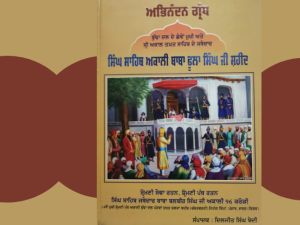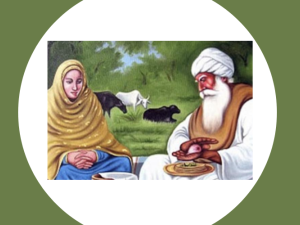Author Jagmohan Singh Gill, a Kolkata-born businessman, now devotes the majority of his time to researching social history, particularly the Sikh community in eastern India. As honorary In-charge and General Secretary of the Sikh Mission Purvi Bharat, he has been instrumental in promoting Sikhism in the region. His scholarly work focuses on the socio-cultural life of Sikhs with deep local roots, exploring their language, traditions, and daily practices. Gill conducts extensive fieldwork, staying in remote villages and engaging with elders to gather accurate and nuanced insights. His research, blending empirical data with historical texts, has been widely recognized in academic circles and published in renowned journals and periodicals globally.
The author meticulously examines the presence and contribution of Sikhs in regions like Bihar, Jharkhand, West Bengal, Assam, Odisha, and even Bangladesh, connecting these communities to the broader Sikh narrative and underscoring their importance in the development and survival of Sikhism beyond its traditional heartland of Punjab. This ambitious work brings to light the significance of places such as Patna Sahib, the birthplace of Guru Gobind Singh, while also offering a poignant analysis of the Sikh communities’ enduring resilience and cultural preservation in the face of historical isolation from the central institutions of Sikhism.
The book’s ten chapters systematically map out key regions where Sikh communities have flourished for centuries, beginning with a focused analysis of the “Ethnic Sikhs of Bihar” and moving through pivotal areas such as Sasaram, Kedli Chatti, and Kolkata. The author navigates these locations with a deep historical consciousness, using both archival sources, like the preserved *Hukamnamas* (royal edicts from Sikh Gurus), and local oral traditions to illustrate how Sikhism took root and evolved in the eastern part of the subcontinent. A recurring theme is the syncretic nature of Sikh identity in these regions. Gill highlights how these communities have maintained the core tenets of Sikhism, as prescribed in the *Guru Granth Sahib*, while also adapting to local cultures and social milieus. In doing so, the author gives voice to the complexity of Sikh identity, showcasing how these communities are both distinctly Sikh and uniquely intertwined with the historical, cultural, and economic realities of eastern India. The chapter “Kedli Chatti and Dumri (Jharkhand): Two more Pearls in the String of Sikhism” serves as a fascinating case study in this regard, as it illustrates how Sikhism in Jharkhand has developed in dialogue with indigenous practices.
The symbolic and spiritual centrality of Patna Sahib forms the backbone of the book’s narrative. Gill asserts that the birthplace of Guru Gobind Singh serves not only as a historical and spiritual locus for Sikhs in the region but also as a living testament to the continuity of Sikhism outside Punjab. He traces the journeys of the Sikh Gurus through this part of India, emphasizing how their travels laid the groundwork for the enduring presence of Sikhism in these regions. Moreover, the numerous references to *Hukamnamas* and *Vaars* (Ballads of Sikh history) add a rich documentary layer to his argument, suggesting that the connection between the eastern Sikhs and the heart of Sikhism has been maintained through written as well as oral communication, even across vast distances. The role of Patna Sahib is further extended in the book’s discussion of how historical Gurdwaras across eastern India serve as vital nodes of spiritual and cultural heritage. Gill’s call for the restoration of dilapidated Gurdwaras and the construction of new ones points to the urgent need for infrastructural support for these communities, which he argues is essential for the socio-economic upliftment of the Sikhs in this region.
One of the critical issues Gill raises is the preservation of the Punjabi language in these distant communities. While the *Guru Granth Sahib* is written in Gurmukhi, many Sikhs in the east have become linguistically disconnected from their mother tongue, creating an emotional and cultural divide. Gill argues for a concerted effort to reintegrate these communities through language education and cultural exchange, thus bridging the gap between mainstream Sikhism and the Sikhs of the east. However, this linguistic challenge is not presented as an insurmountable barrier. On the contrary, Gill is optimistic about the resilience of these communities, who, despite being geographically isolated, have retained their commitment to Sikh values, ethics, and communal life. His detailed accounts of regional differences in the use of Punjabi, particularly in Bihar and West Bengal, suggest a need for more scholarly engagement with the linguistic diversity of the Sikh diaspora, an area that could benefit from further academic inquiry.
In the concluding chapters, particularly “Sikhs Beyond Punjab” and “Blessed Sikhs of Bihar,” Gill shifts his focus to contemporary issues facing the Sikh diaspora in the east. He notes the economic hardships and cultural marginalization these communities face and argues for stronger institutional support from Sikh organizations, both in Punjab and globally. His call for educational scholarships, vocational training, and women’s empowerment initiatives are grounded in a larger vision of social and economic parity between eastern Sikhs and their brethren in Punjab. This forward-looking perspective underscores Gill’s broader argument that the Sikh community’s strength lies in its unity, regardless of geographic or socio-economic divides.
Gill’s book is an invaluable contribution to Sikh studies, particularly in its focus on regional Sikh histories that have been largely neglected in mainstream historiography. The author successfully intertwines historical research with a more personal, almost activist-driven plea for greater inclusion of eastern Sikhs in the global Sikh narrative. His work resonates with both scholars and lay readers, offering rich historical insights while advocating for tangible social change. However, it could benefit from a more detailed exploration of the Sikh diaspora’s interactions with local non-Sikh populations, a dynamic that remains somewhat underexplored in the text.
In sum, *Exploring the Sikh Roots in Eastern India* is a pioneering study that expands the geographic and cultural boundaries of Sikh history. By shedding light on the enduring presence of Sikhs in the east along with coloured Seventy Photos , Gill provides a nuanced and compelling narrative that challenges conventional understandings of Sikhism as a primarily Punjabi phenomenon. It is a work that scholars of Sikh history, South Asian studies, and diaspora studies will find both enlightening and essential for future research.






